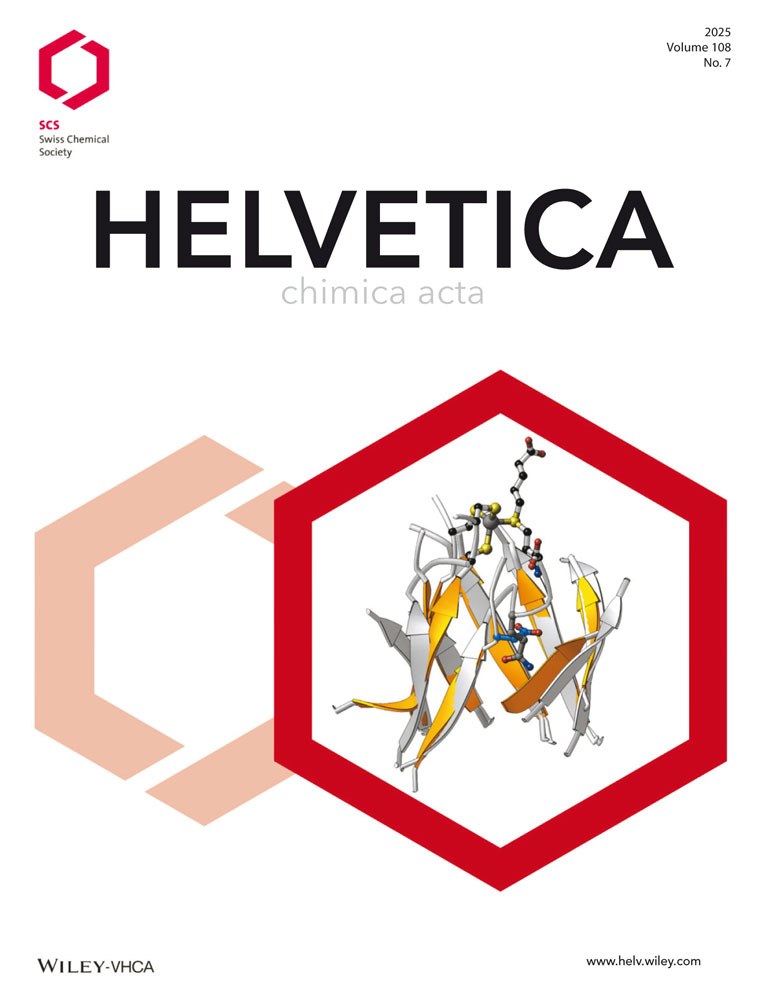Molecular Switching: A Fully Reversible, Optically Active Photochemical Switch Based on a Tetraethynylethene-1,1′-Binaphthalene Hybrid System
Abstract
The synthesis, characterization, and physical properties of a novel, fully reversible, light-driven molecular switch, (R,R)-1/(R,R)-2, based on a tetraethynylethene-1,1′-binaphthalene hybrid system are presented. trans-Configured (R,R)-1 was synthesized in 57% yield by Stille cross-coupling between stannylated tetraethynylethene 3 and 3-iodo-1,1′-binaphthalene derivative (R)-4 (cf. Scheme 2). The cis-isomer (R,R)-2 was prepared from (R,R)-1 by photoisomerization. X-Ray crystal-structure analyses were obtained for both cis- and trans-forms of the photoswitch (Figs. 1 and 2). In the crystalline state, molecules of the cis-isomer (R,R)-2 exhibit intramolecular edge-to-face (C−H⋅⋅⋅π) interactions between naphthalene rings of the two 1,1-binaphthalene moieties (Fig. 3). The switching properties were investigated by electronic absorption spectroscopy (Table and Fig. 4): irradiation at λ=398 nm converts trans-isomer (R,R)-1 into cis-isomer (R,R)-2, whereas switching occurs in the opposite direction upon irradiation at λ=323 nm. No thermal interconversion between the two isomers was observed in CH2Cl2 at room temperature over a period of 2 – 3 months, and the system possesses good resistance against photofatigue (Fig. 5). Investigations of the circular dichroism of (R,R)-1 and (R,R)-2 in CH2Cl2 solution showed that the chiral binaphthalene moieties induce a weak Cotton effect in the achiral tetraethynylethene core (Fig. 6). System (R,R)-1/(R,R)-2 represents one of the rare switches allowing two-way photochemical interconversions, not perturbed by thermal-isomerization pathways.




